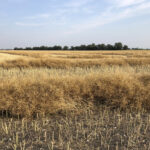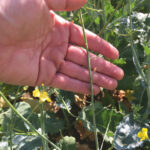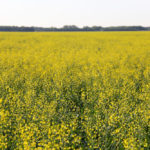
Don’t cut canola too soon
Swathing at 30 per cent seed colour change is so 1980s. Recent surveys show it’s better to wait until 60 per cent — or later

Capturing spores in the fight against sclerotinia
You don’t need to guess at sclerotinia infection potential in your canola crop — three tests are available

Managing salinity with forages
Some saline areas can never grow a profitable annual crop. Two farmers share their experiences with seeding perennial forages instead

Canola flowers flounder in the heat
Yield loss can be more than we realize — highs over 29.5 C disrupt the flower-fertilization process, which can leave blanks and empty pods up the stem

Old combines hold their own at harvest
A PAMI survey finds canola losses can be minimized by operators who understand their machines and how to set them

How to keep sclerotinia infection to less than five per cent
New research shows fungicide applied at or just after 20 per cent flowering is still the best way to stop sclerotinia stem rot from shredding canola profits

Two farmers make the case for pea-canola intercropping
Growing two crops in the same field sounds like it could be difficult, but these two farmers have figured it out and say the result is higher profit

Two research projects looking at intercrops
Western Ag Innovations run intercrop trials in southern Alberta

Getting to higher canola emergence
With consistent depth, placement into warm, moist soils, and good competition against weeds, your canola fields can turn a higher percentage of seeds into mature, high-yielding plants


